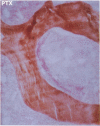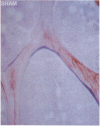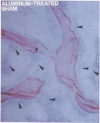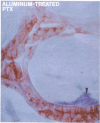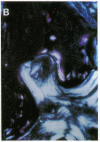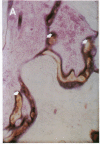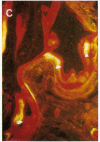Abstract
To examine the influence of osteoblast function on aluminum-induced neo-osteogenesis in the mammalian species, we compared the effects of aluminum in sham-operated and thyroparathyroidectomized (TPTX) beagles. TPTX dogs received sufficient calcium carbonate and calcitriol to maintain normal plasma calcium and calcitriol levels, but developed evidence of decreased osteoblast recruitment and activity, including diminished osteoid-covered trabecular bone surface (3.22 +/- 0.21 vs. 10.95 +/- 1.30%) and a decreased osteoblast number (27.8 +/- 8.1 vs. 139.0 +/- 26.0/mm). Administration of aluminum (1.25 mg/kg i.v., three times/wk) increased the serum aluminum levels in both sham (1,087.0 +/- 276.0 vs. 2.7 +/- 0.8 micrograms/liter) and TPTX animals (2,786.0 +/- 569.0 vs. 3.6 +/- 0.8 micrograms/liter) above normal but did not alter the plasma calcium, creatinine, or PTH from control levels in either sham or TPTX dogs. After 8 wk of therapy, however, bone biopsies from sham-operated beagles displayed evidence of neo-osteogenesis including an increased bone volume (47.0 +/- 1.0 vs. 30.4 +/- 0.9%) and trabecular number (4.1 +/- 0.2 vs. 3.2 +/- 0.2/mm). Much of the enhanced volume resulted from deposition of poorly mineralized woven bone (9.9 +/- 2.7%). In contrast, biopsies from aluminum-treated TPTX animals exhibited significantly less evidence of ectopic bone formation. In this regard, bone (35.5 +/- 1.7%) and woven tissue volume (1.4 +/- 0.8%) as well as trabecular number (3.3 +/- 0.1/mm) were significantly less than those of the aluminum-treated controls. These observations illustrate that aluminum reproducibly stimulates neo-osteogenesis and induces a positive bone balance. However, this effect apparently depends on the availability of a functional osteoblast pool which, if depleted by TPTX, limits the expression of aluminum-induced new bone formation.
Full text
PDF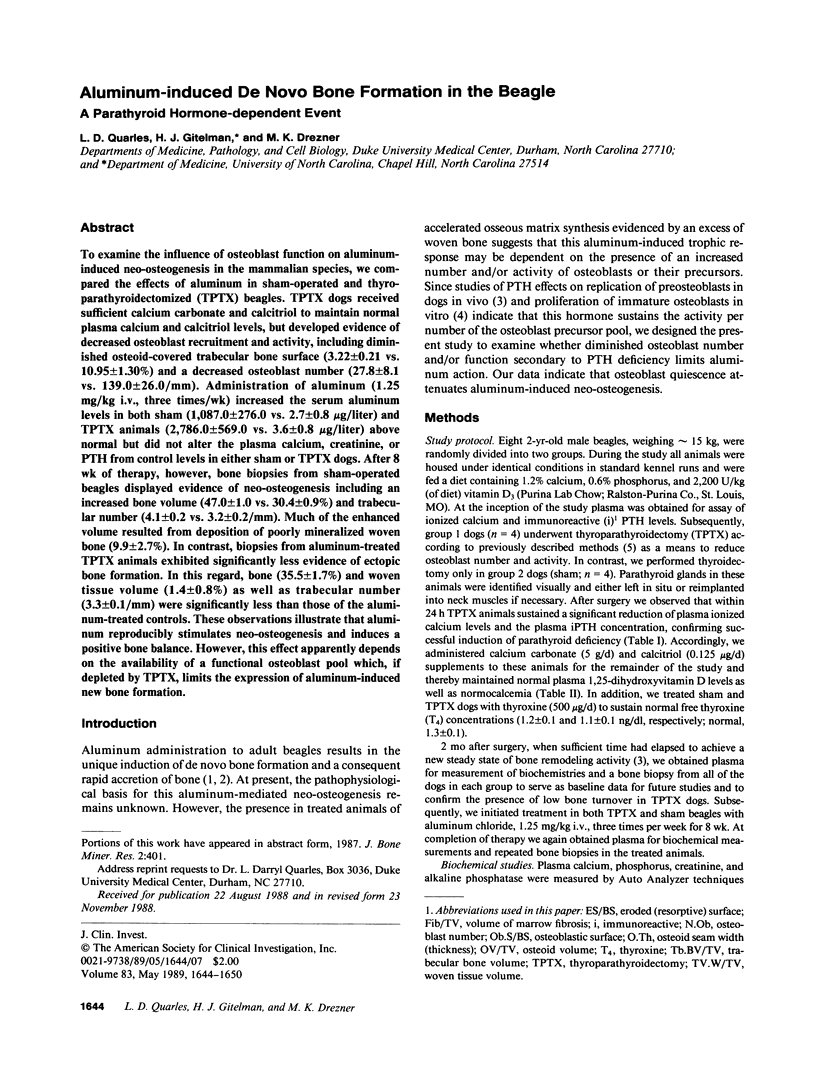
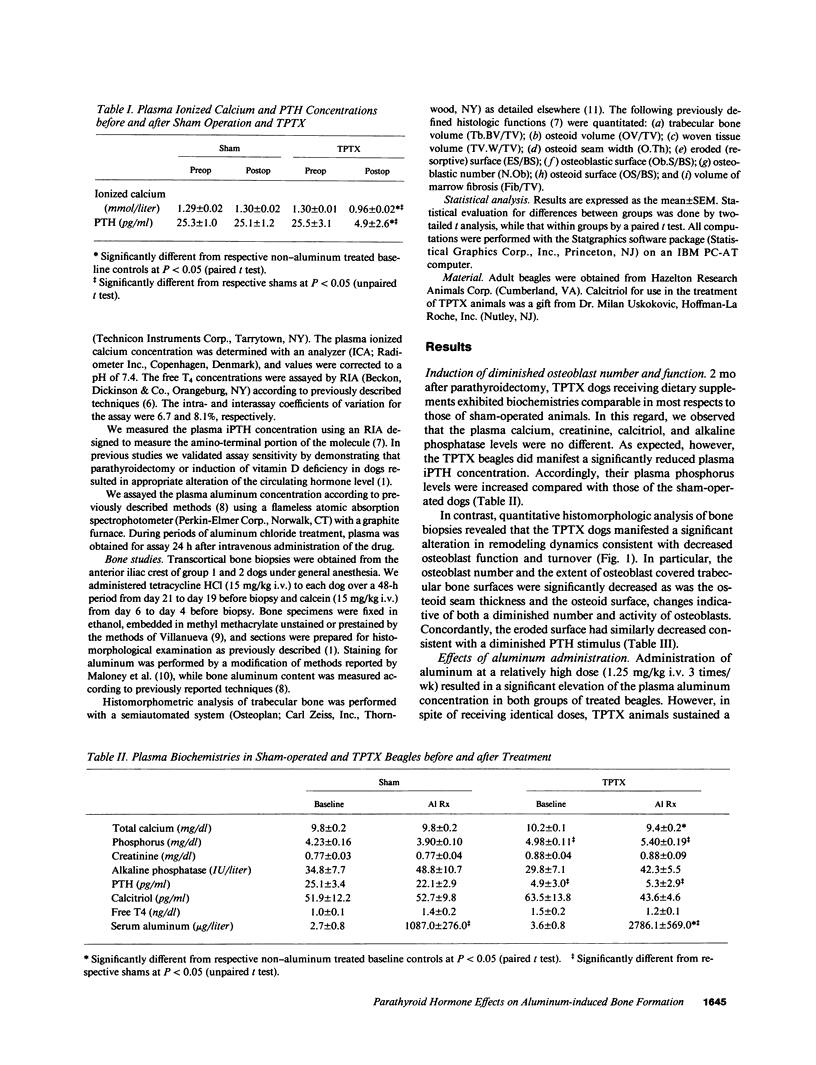
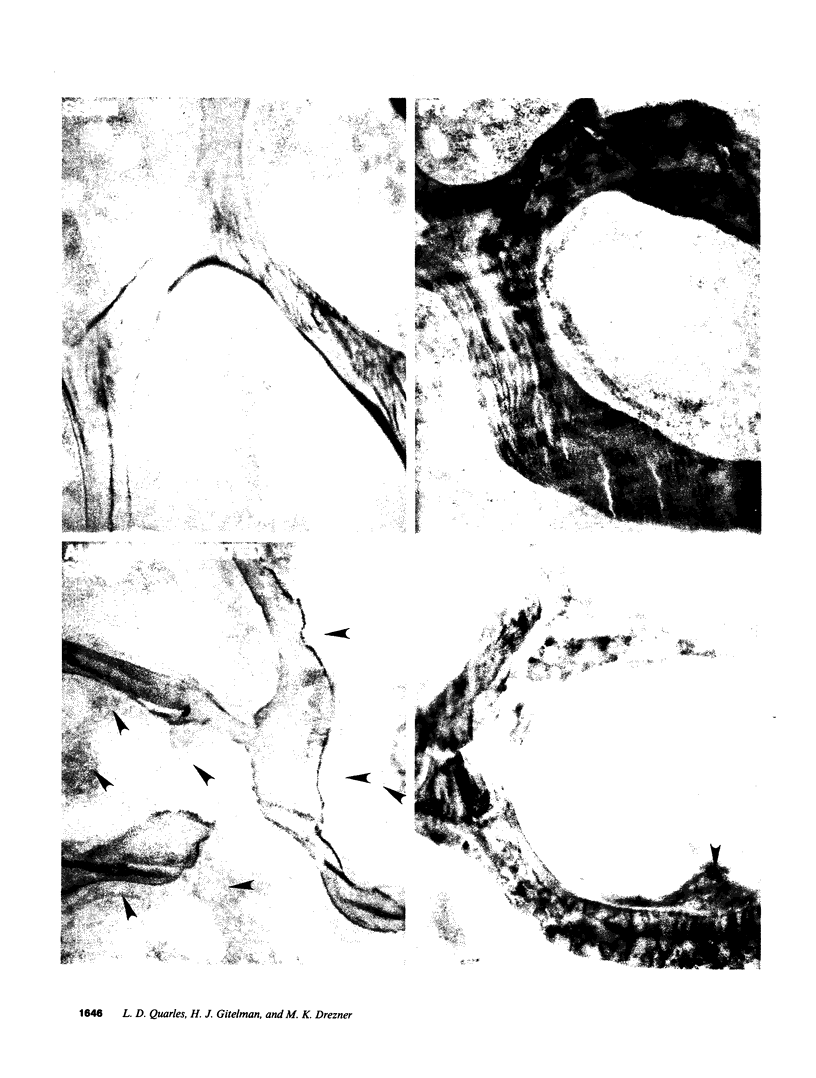
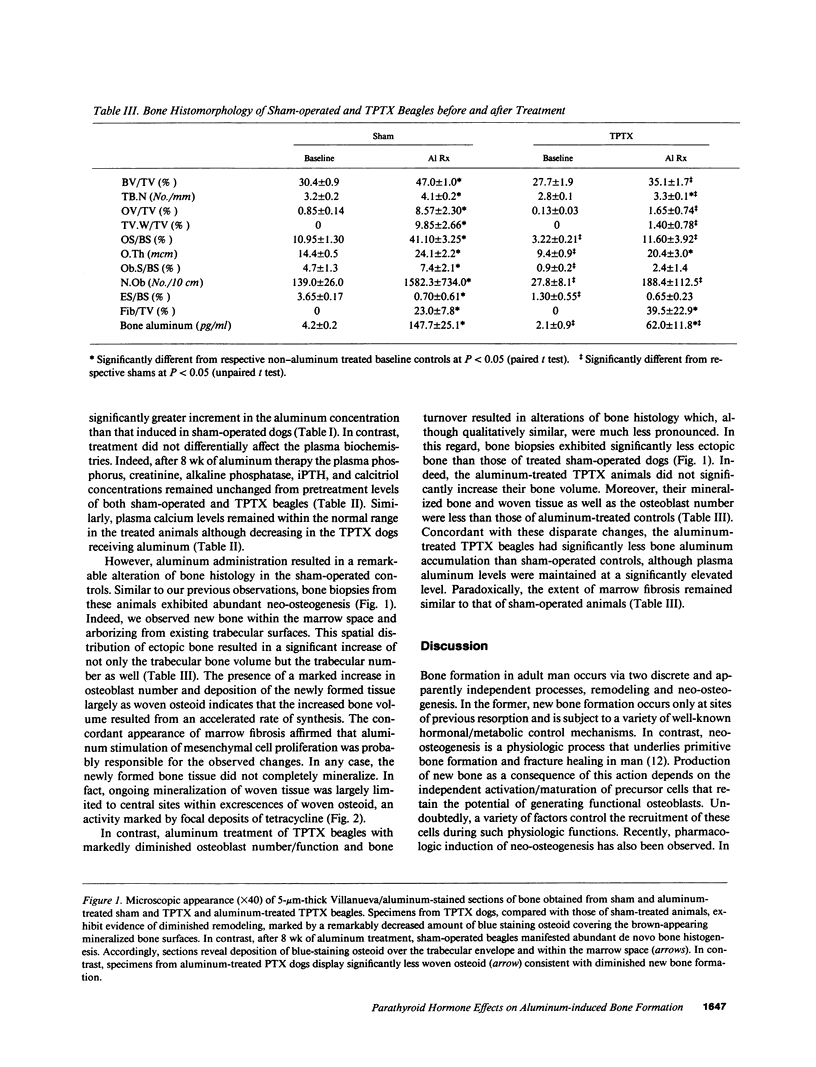
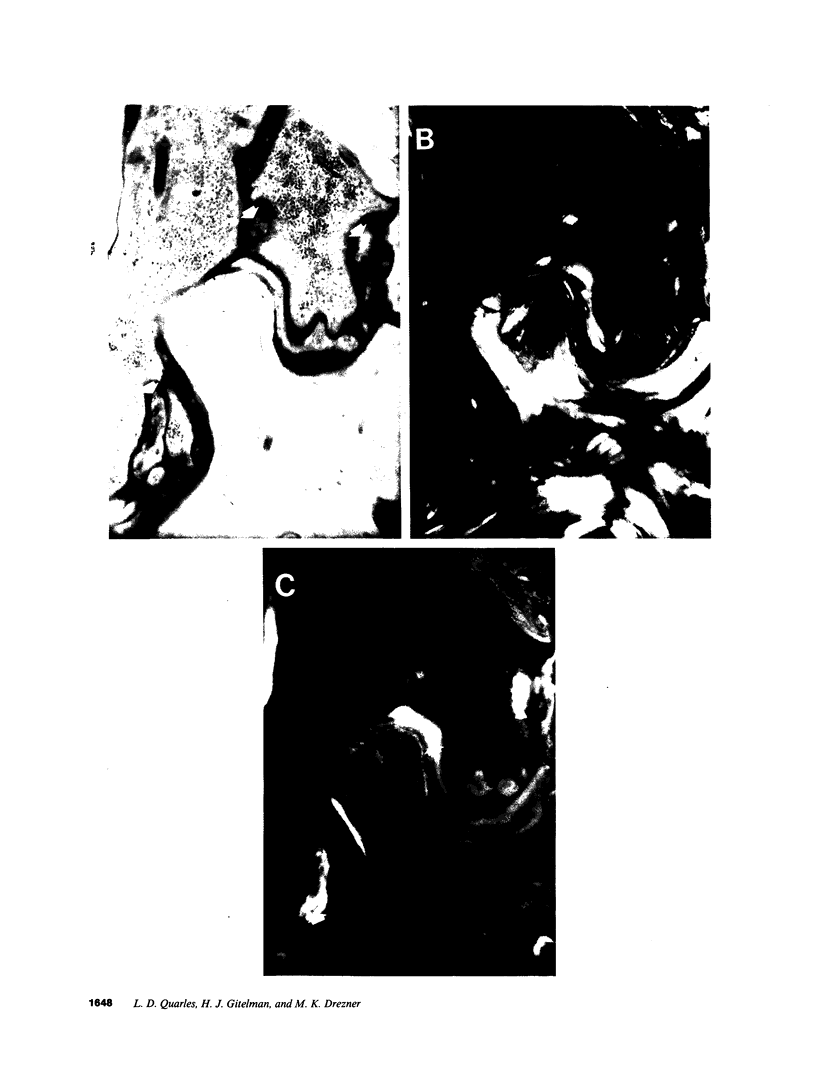
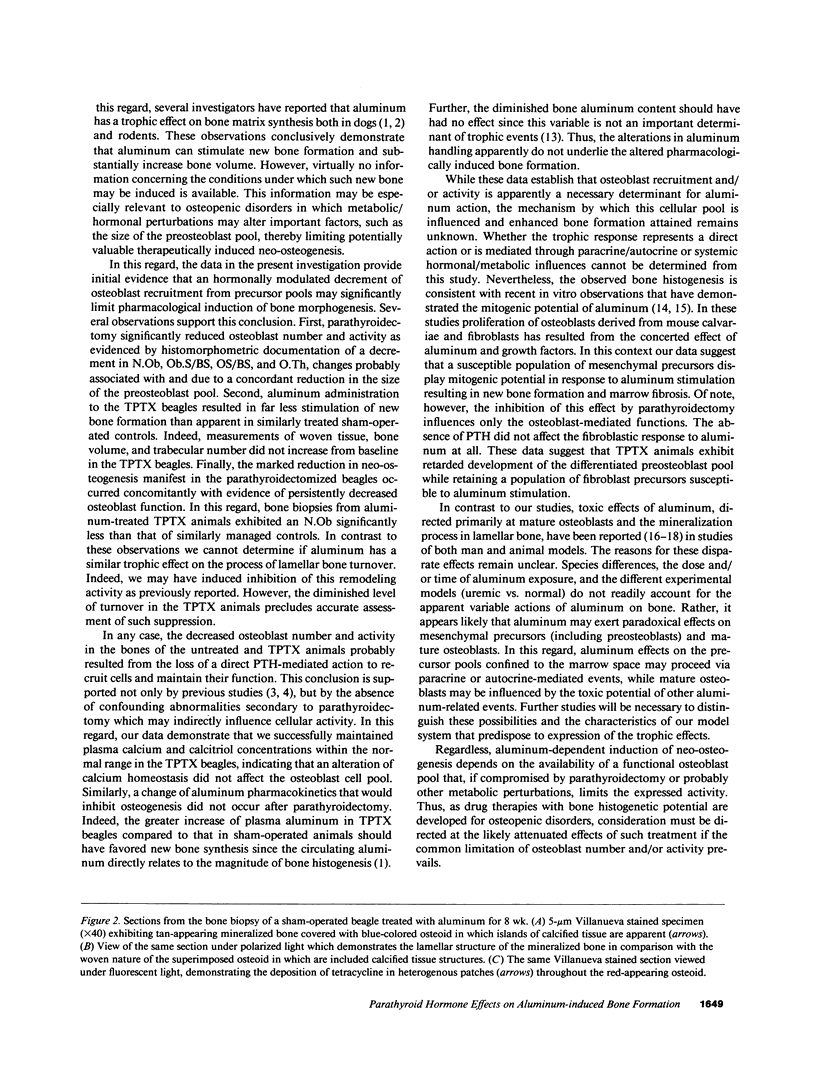
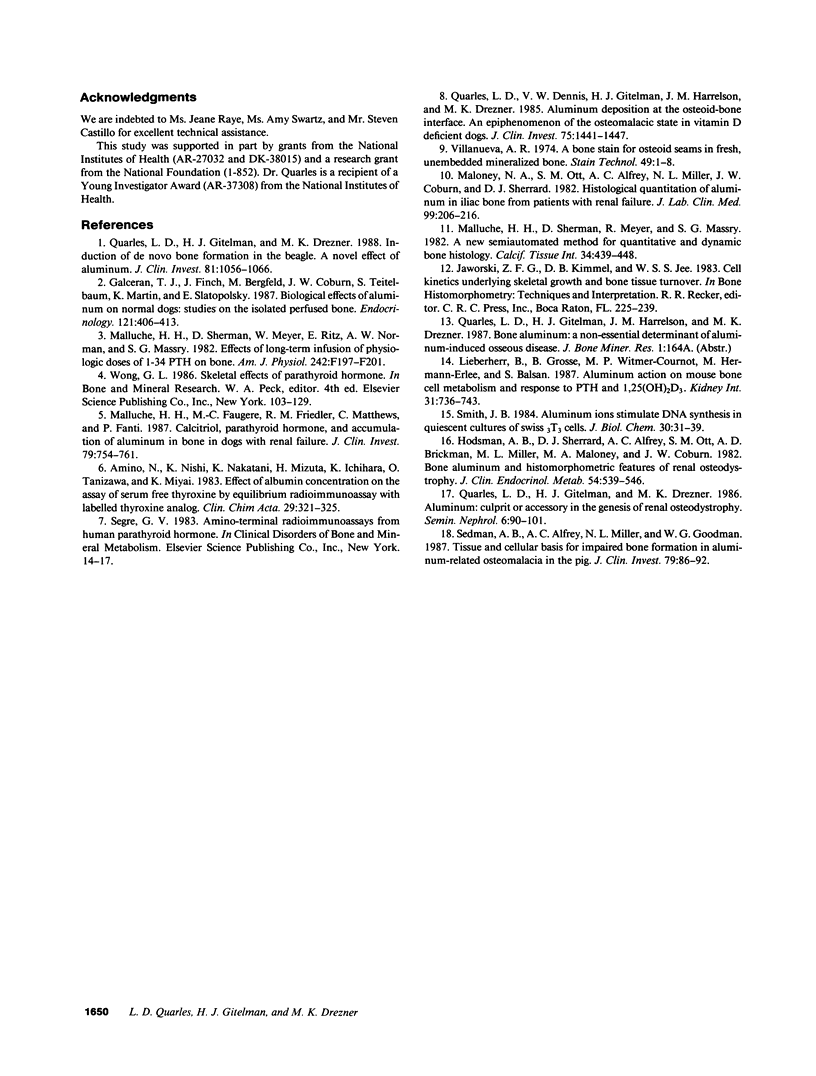
Images in this article
Selected References
These references are in PubMed. This may not be the complete list of references from this article.
- Amino N., Nishi K., Nakatani K., Mizuta H., Ichihara K., Tanizawa O., Miyai K. Effect of albumin concentration on the assay of serum free thyroxin by equilibrium radioimmunoassay with labeled thyroxin analog (Amerlex Free T4). Clin Chem. 1983 Feb;29(2):321–325. [PubMed] [Google Scholar]
- Galceran T., Finch J., Bergfeld M., Coburn J., Martin K., Teitelbaum S., Slatopolsky E. Biological effects of aluminum on normal dogs: studies on the isolated perfused bone. Endocrinology. 1987 Jul;121(1):406–413. doi: 10.1210/endo-121-1-406. [DOI] [PubMed] [Google Scholar]
- Hodsman A. B., Sherrard D. J., Alfrey A. C., Ott S., Brickman A. S., Miller N. L., Maloney N. A., Coburn J. W. Bone aluminum and histomorphometric features of renal osteodystrophy. J Clin Endocrinol Metab. 1982 Mar;54(3):539–546. doi: 10.1210/jcem-54-3-539. [DOI] [PubMed] [Google Scholar]
- Lieberherr M., Grosse B., Cournot-Witmer G., Hermann-Erlee M. P., Balsan S. Aluminum action on mouse bone cell metabolism and response to PTH and 1,25(OH)2D3. Kidney Int. 1987 Mar;31(3):736–743. doi: 10.1038/ki.1987.60. [DOI] [PubMed] [Google Scholar]
- Malluche H. H., Faugere M. C., Friedler R. M., Matthews C., Fanti P. Calcitriol, parathyroid hormone, and accumulation of aluminum in bone in dogs with renal failure. J Clin Invest. 1987 Mar;79(3):754–761. doi: 10.1172/JCI112881. [DOI] [PMC free article] [PubMed] [Google Scholar]
- Malluche H. H., Sherman D., Meyer W., Massry S. G. A new semiautomatic method for quantitative static and dynamic bone histology. Calcif Tissue Int. 1982 Sep;34(5):439–448. doi: 10.1007/BF02411282. [DOI] [PubMed] [Google Scholar]
- Malluche H. H., Sherman D., Meyer W., Ritz E., Norman A. W., Massry S. G. Effects of long-term infusion of physiologic doses of 1-34 PTH on bone. Am J Physiol. 1982 Feb;242(2):F197–F201. doi: 10.1152/ajprenal.1982.242.2.F197. [DOI] [PubMed] [Google Scholar]
- Maloney N. A., Ott S. M., Alfrey A. C., Miller N. L., Coburn J. W., Sherrard D. J. Histological quantitation of aluminum in iliac bone from patients with renal failure. J Lab Clin Med. 1982 Feb;99(2):206–216. [PubMed] [Google Scholar]
- Quarles L. D., Dennis V. W., Gitelman H. J., Harrelson J. M., Drezner M. K. Aluminum deposition at the osteoid-bone interface. An epiphenomenon of the osteomalacic state in vitamin D-deficient dogs. J Clin Invest. 1985 May;75(5):1441–1447. doi: 10.1172/JCI111846. [DOI] [PMC free article] [PubMed] [Google Scholar]
- Quarles L. D., Gitelman H. J., Drezner M. K. Aluminum: culprit or accessory in the genesis of renal osteodystrophy. Semin Nephrol. 1986 Mar;6(1):90–101. [PubMed] [Google Scholar]
- Quarles L. D., Gitelman H. J., Drezner M. K. Induction of de novo bone formation in the beagle. A novel effect of aluminum. J Clin Invest. 1988 Apr;81(4):1056–1066. doi: 10.1172/JCI113417. [DOI] [PMC free article] [PubMed] [Google Scholar]
- Sedman A. B., Alfrey A. C., Miller N. L., Goodman W. G. Tissue and cellular basis for impaired bone formation in aluminum-related osteomalacia in the pig. J Clin Invest. 1987 Jan;79(1):86–92. doi: 10.1172/JCI112813. [DOI] [PMC free article] [PubMed] [Google Scholar]
- Villanueva A. R. A bone stain for osteoid seams in fresh, unembedded, mineralized bone. Stain Technol. 1974 Jan;49(1):1–8. doi: 10.3109/10520297409116928. [DOI] [PubMed] [Google Scholar]



